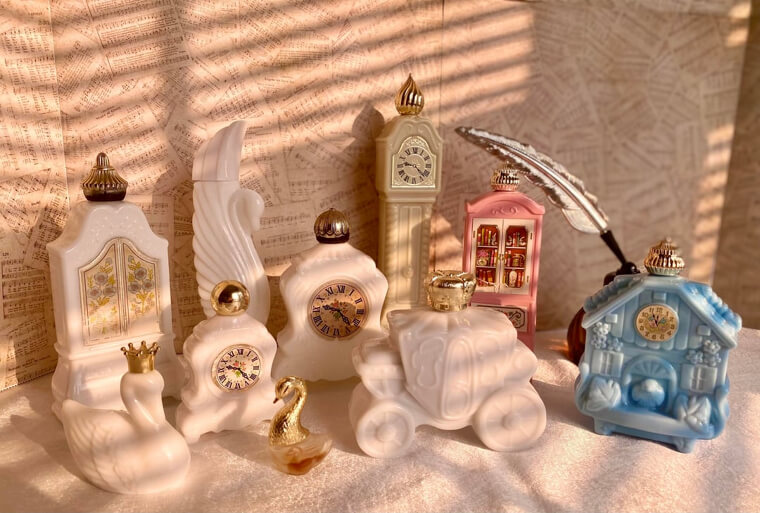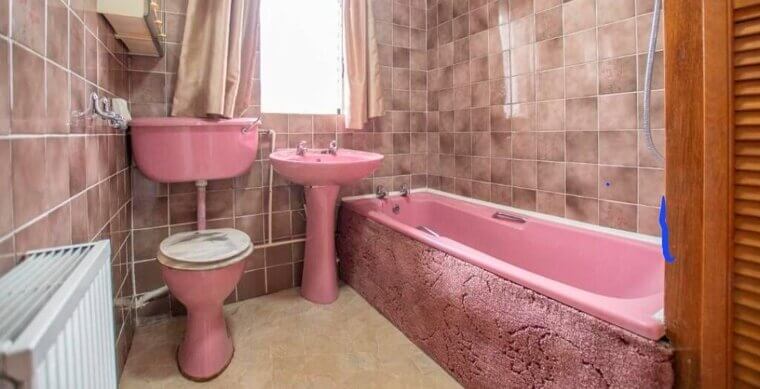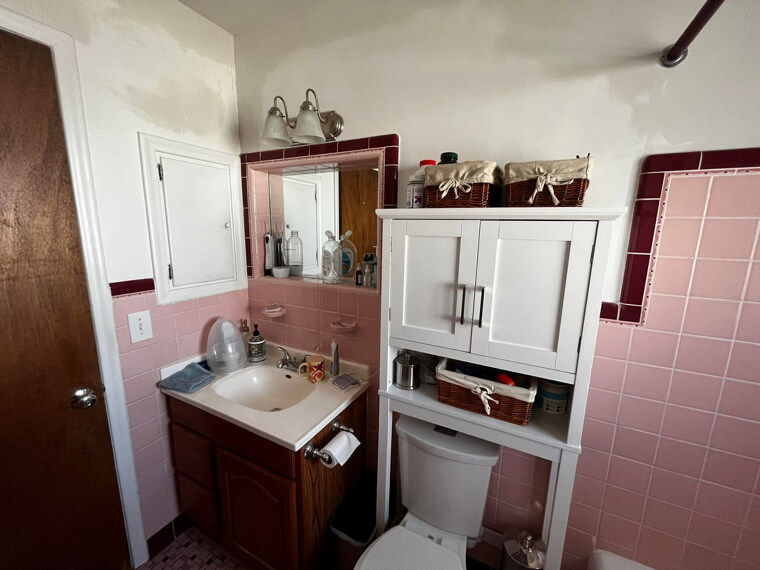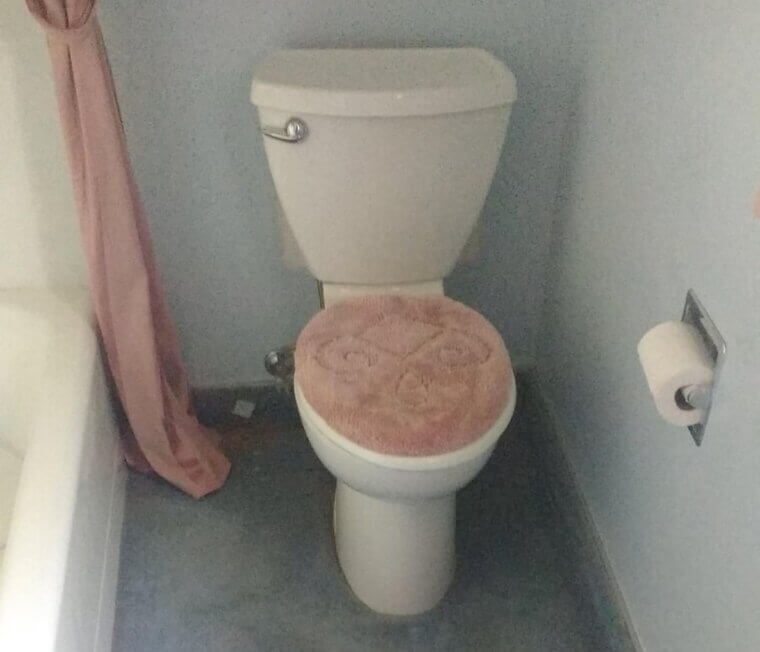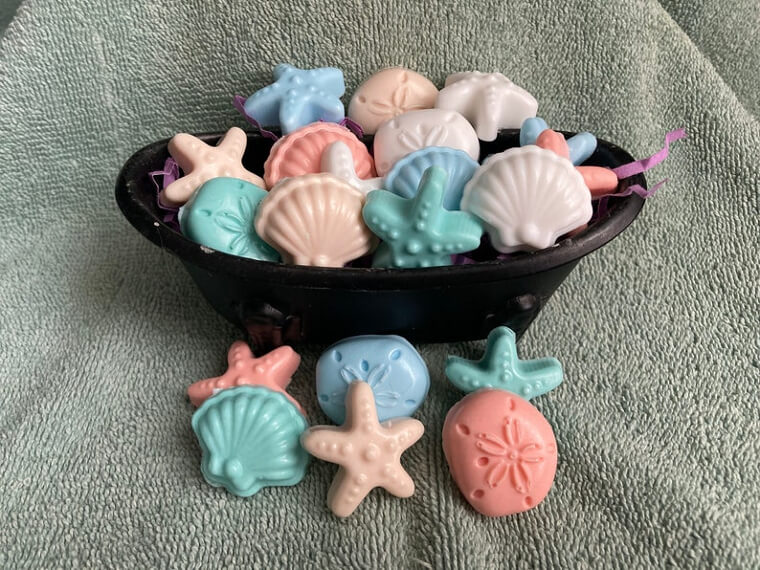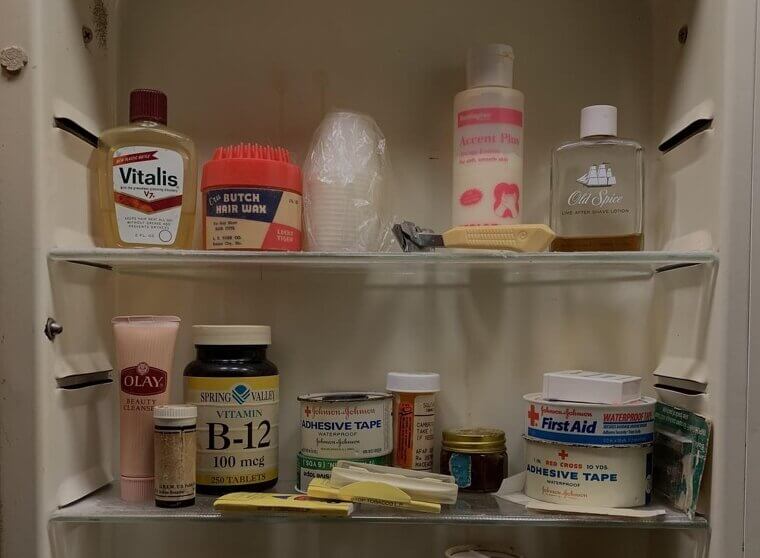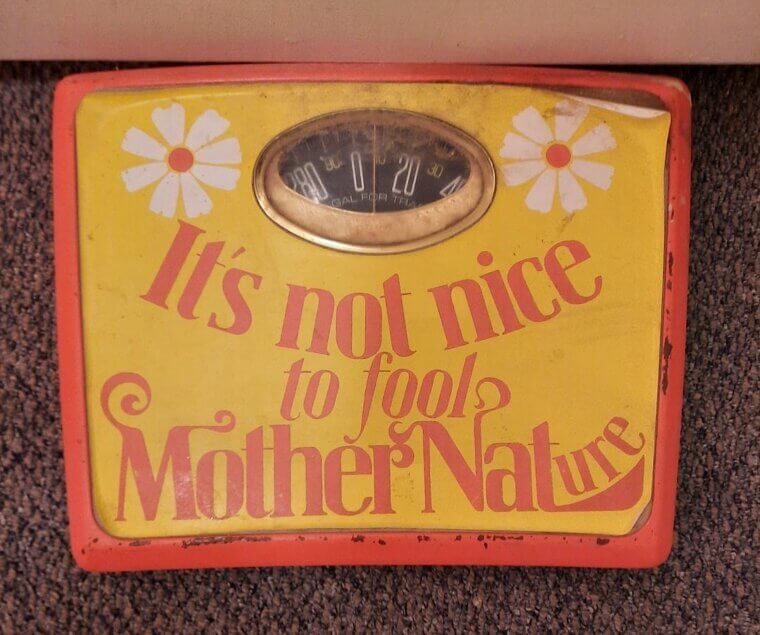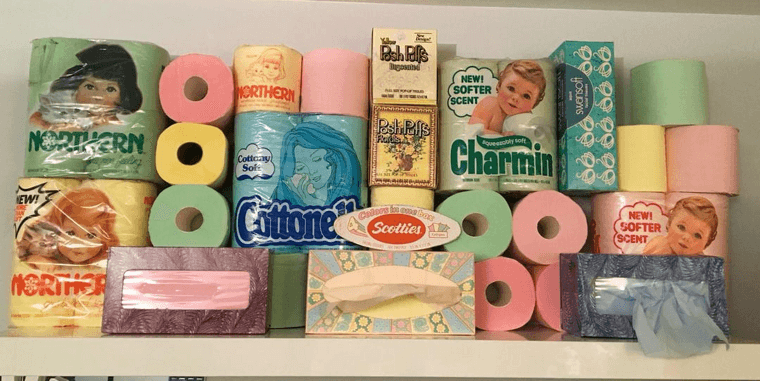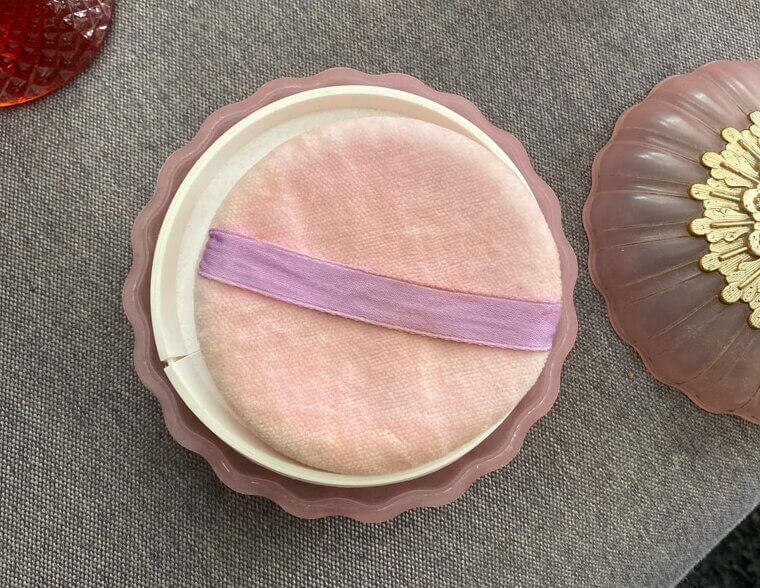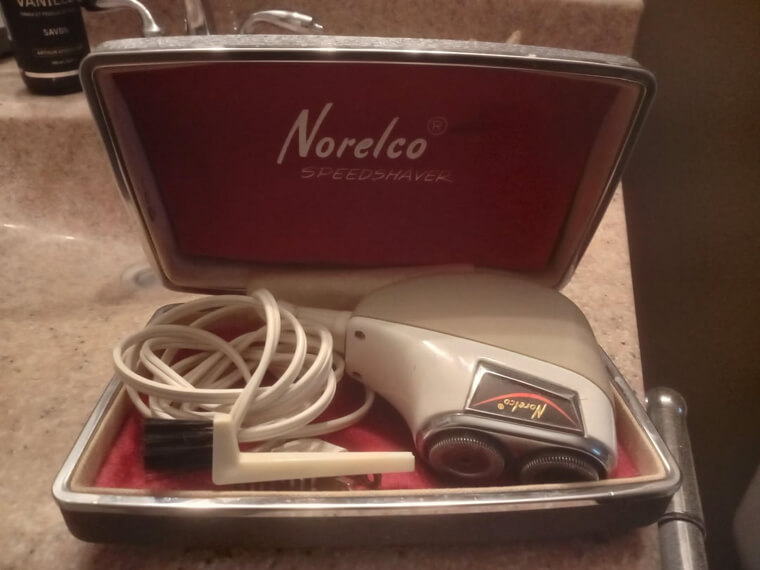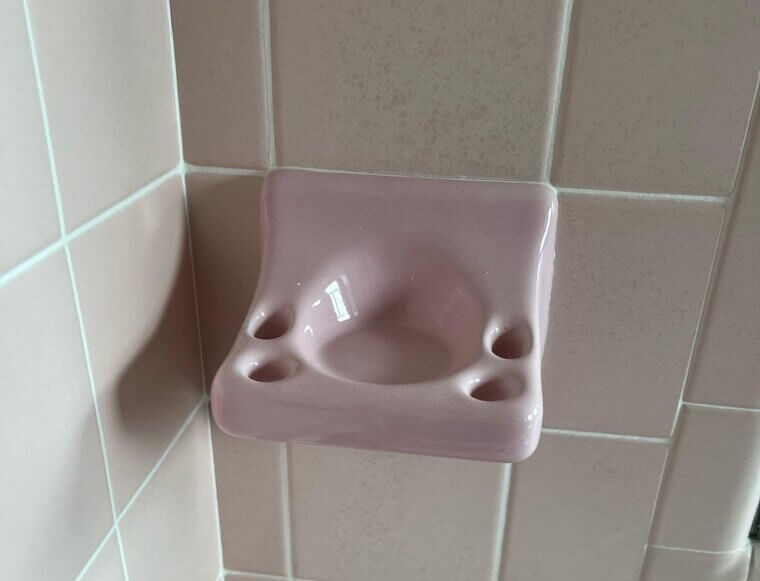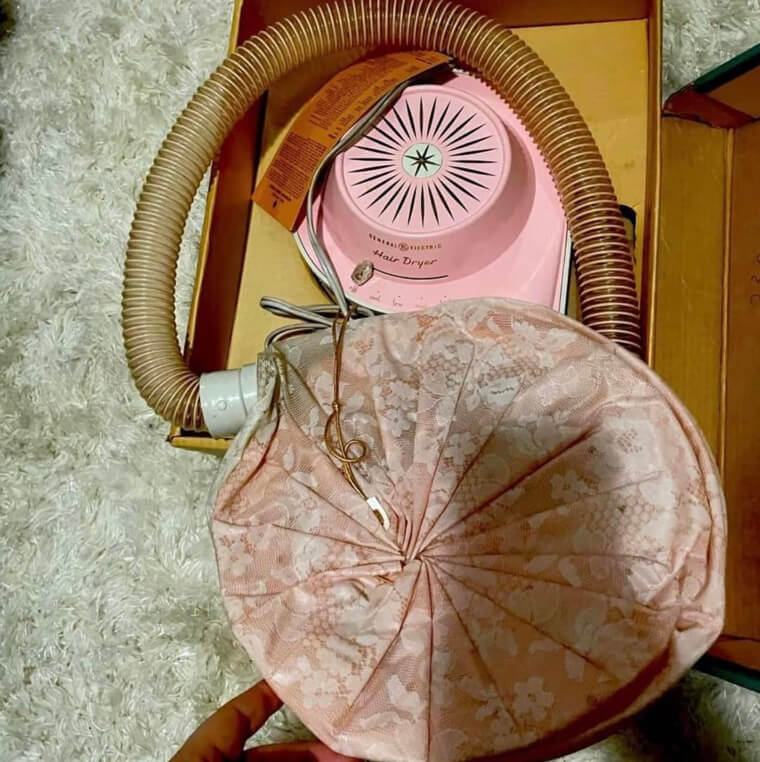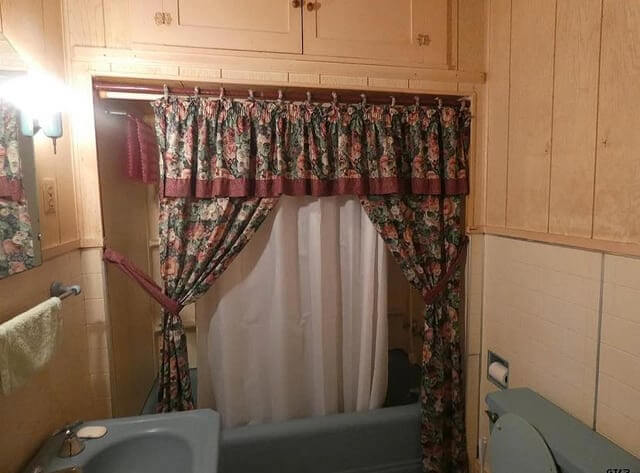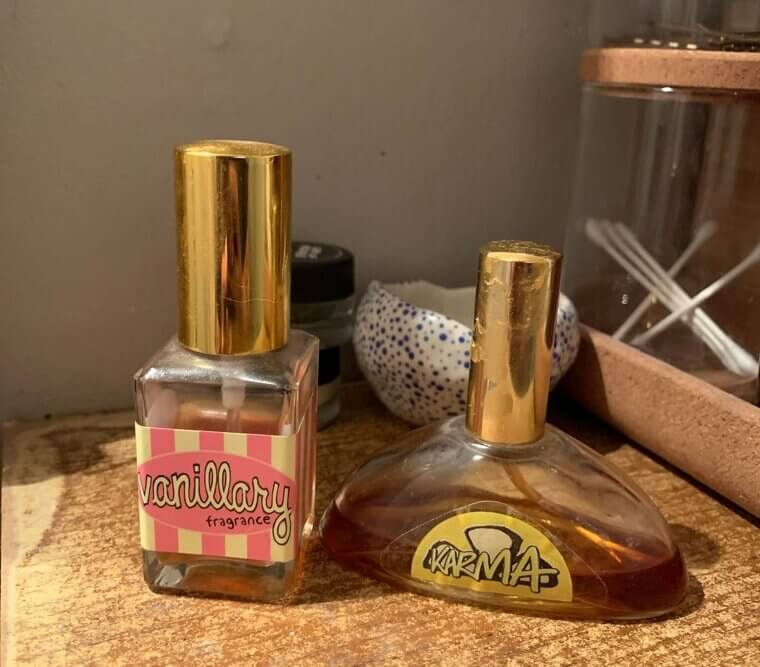Glass Perfume Bottles and Avon Treasures
Every bathroom counter doubled as a mini perfume museum. Avon was the curator, and moms across America were loyal patrons. The bottles came shaped like birds, cars, swans, and even busts of famous people. They glimmered on mirrored trays beside hairbrushes and powders. The air always smelled faintly of roses, baby powder, or whatever floral scent came in the latest bottle. Children were warned never to touch, which of course meant everyone did. A few drops of perfume were enough to fill the house for hours. These bottles were more than decoration; they were symbols of self-care and pride. Avon ladies delivered them with a smile and a catalog full of temptation. The designs may seem over the top now, but they turned an ordinary bathroom into a little palace of fragrance and glamour.
The Pink or Avocado Bathtub
For reasons that remain mysterious, people in the 70s believed that bathing in an avocado-green tub somehow made life better. Pink, blue, and even mustard were also popular choices. It was like Crayola designed the plumbing. Manufacturers called it modern. Guests called it unforgettable. These tubs were heavy, shiny, and built to last through several remodels, which is why many still haunt old homes today. Back then, a colored tub wasn’t just functional; it was fashionable. Couples showed them off proudly, as if they were designer furniture. The baths were deep enough to drown your worries in Mr. Bubble and scented oils. They chipped easily, stained permanently, and still managed to charm everyone who saw them. Every Boomer family had one, and every child remembers that one summer bath that overflowed with bubbles and parental yelling. A white bathtub might look sophisticated now, but an avocado one had spirit, even if it also had soap rings that could tell stories.
A Sea of Pastel Tile
If you grew up in the 60s or 70s, you probably remember walking into a bathroom so bright it could wake you faster than a cup of coffee. The walls were pink, the sink was pink, and the toilet was, naturally, also pink. Some houses went for mint green or sky blue, but the message was the same: color was confidence. Every surface was tiled, from floor to ceiling, and cleaning all that grout took effort that only mothers seemed capable of. Even so, the bathroom always sparkled. It was cheerful, bold, and completely unapologetic. Matching towels and rugs finished the look, usually in an equally daring shade. Today’s bathrooms all look the same, with safe gray and white tones, but those pastel rooms had personality. They felt alive, like stepping into a box of chalky candy. It was impossible to have a gloomy morning when your entire bathroom looked like the inside of a sherbet container.
The Shag Toilet Seat Cover
Some inventions defy explanation, and the shag toilet seat cover is one of them. It looked soft, it felt soft, and yet it served no real purpose other than trapping humidity and questionable odors. But in the 70s, that fluffy ring of polyester was a design triumph. You could buy entire matching sets: the lid cover, the contour rug that hugged the toilet’s base, and even a fuzzy tank cover for extra style points. Cleaning them was a full-time job, but nobody cared. It was about presentation. You wanted guests to walk in and say, “Now that’s comfort.” Kids loved brushing their hands over it, and parents constantly yelled not to. For some reason, everyone believed a toilet should coordinate with the towels and curtains. These days, the idea makes us laugh, but there’s something endearing about a time when even the toilet got dressed up for the day.
Decorative Soaps That Nobody Used
Somewhere in every Boomer bathroom sat a dish of fancy soaps shaped like shells, flowers, or swans. They smelled like heaven and collected dust like nothing else. Guests knew better than to use them. Kids knew better too, but curiosity always won eventually. After one scolding, no one tried again. These soaps came in pastel colors that matched the tile and seemed to last for decades. They often appeared in bathrooms that had never seen a single visitor, which made their existence even funnier. They were like trophies, proof that the homeowner had taste and restraint. Even today, a few of these soaps survive in drawers, still perfectly intact, still waiting for their big moment that will never come.
A Medicine Cabinet Full of Familiar Brands
Behind every mirrored door was a time capsule of American health and hygiene. Vicks VapoRub, Pepto-Bismol, Band-Aids, and Pond’s Cold Cream lined the narrow metal shelves. Somewhere in there, a thermometer waited patiently next to a half-used box of cotton swabs. The smell was unmistakable: clean, minty, and faintly medicinal. Every family had the same products, and somehow they lasted forever. That cabinet was the most personal part of the bathroom, a mix of first-aid supplies and beauty secrets. You could learn everything about a household by what was tucked behind that mirror. Today, sleek medicine drawers hide the clutter, but nothing beats that soft clang of the metal door closing on a collection of cure-alls that seemed to fix everything from headaches to heartbreak.
The Bathroom Scale Nobody Trusted
Every Boomer home had a scale, and nobody believed it. Usually metal, always inaccurate, it sat in a corner and squeaked when stepped on. After a big meal, someone would joke about “checking the damage,” but deep down, no one wanted to know. The dial numbers spun like a carnival wheel before settling on a number that felt personal. The bathroom scale was as much decoration as a health tool. Some matched the tile; others sported stripes or metallic finishes. Everyone used it, complained about it, and then forgot it until Monday morning. Modern digital scales might be more precise, but they’ll never have the same personality as that unreliable relic from the past.
Toilet Paper With Patterns and Color
In the 1970s, toilet paper came in every color of the rainbow. Pink rolls for pink bathrooms, blue rolls for blue ones, and floral designs for those who really wanted to make a statement. It was soft, scented, and proudly coordinated with the décor. Some households even displayed extra rolls like artwork. It’s funny to think people once matched their toilet paper to their wallpaper, but it happened. The idea eventually disappeared, partly because manufacturers realized no one needed sky-blue tissue. Still, there was something oddly satisfying about opening a cabinet and seeing a perfect rainbow of rolls waiting to serve their purpose in style.
Powder Puffs and Vanity Trays
Bathrooms doubled as beauty parlors back then. Every countertop had a mirrored tray holding powder puffs, lotions, and fancy glass jars. Women dusted themselves with scented powder after a bath, leaving behind clouds of lilac or rose. The soft puff was both tool and luxury. Even the simplest bathrooms felt glamorous with a tray of neatly arranged beauty products glimmering under the light. It was elegance on a budget, proof that style didn’t depend on square footage. Today’s minimalist designs feel cold compared to the warmth of those little rituals. A puff of powder might seem outdated now, but it was part of what made getting ready feel special.
The Electric Razor on the Sink
Every Boomer bathroom had one buzzing away every morning. The electric razor was loud, shiny, and usually plugged in right next to the sink. Dads shaved while humming along to the radio, and the smell of aftershave soon filled the air. These razors were built like tanks, heavy and indestructible. Their cords coiled perfectly, and their chrome finishes gleamed under the mirror light. They didn’t promise perfection, but they got the job done. Every nick and whirr was part of the morning routine. It was a simple machine that represented reliability, and somehow it always found its way back to the same corner of the counter.
Cup Holders and Matching Toothbrushes
Families in the 70s believed organization made everything better. Toothbrushes came in matching colors, and every bathroom had a cup holder mounted to the wall, often with frosted glass cups. The idea of sharing a rinse cup seems unthinkable today, but back then, it was perfectly normal. Each cup clinked into a little chrome bracket, and every toothbrush stood proudly in a holder by the sink. Kids always forgot whose was whose, which led to chaos, but nobody cared. It was part of the charm. The matching set was both decorative and practical, and that little clatter of cups in the morning was as familiar as the sound of the radio in the kitchen.
The Hair Dryer Bonnet
Before blow dryers became sleek and powerful, there was the bonnet dryer. Every mom or sister owned one. You put on a plastic cap, connected it to a hose, and sat perfectly still while warm air whooshed through. It took forever, and if you sneezed, the bonnet puffed up like a balloon. It was loud, hot, and oddly comforting. You could read a magazine or sip coffee while waiting for your curls to set. The smell of hairspray filled the air, and everyone accepted it as part of the beauty process. Modern hair dryers may be faster, but none will ever match the pure comedic value of watching someone try to have a serious conversation while wearing a plastic cap that looked like it might launch into orbit.
The Plastic Shower Curtain With Big Flowers
No bathroom was complete without a shower curtain covered in oversized flowers, stripes, or geometric shapes. It was bright, loud, and impossible to ignore. These curtains often came with matching vinyl bath mats and sometimes even matching wastebaskets. The patterns were hypnotic. Standing under the water while staring at massive daisies or orange swirls was like bathing inside a lava lamp. Every few months, the curtain rings would break, leading to an afternoon of replacement and muttering. Still, those shower curtains made a statement. They were bold and happy, a reminder that bathrooms were supposed to be fun.
The Room Spray Everyone Overused
Air fresheners were practically a fifth family member. Spray cans sat proudly on the back of the toilet, promising “mountain air” or “spring meadow.” The scents were strong enough to clear sinuses, but that didn’t stop anyone from using half a can after every visit. The mist lingered for hours, sometimes mixing with perfume or cleaning products to create something truly unforgettable. Some households preferred the gel kind that sat in little cups and slowly shrank over time. They never smelled like what they claimed, but everyone used them anyway. It was part of being polite. A quick spray meant you cared about appearances, even in the most private room in the house.

